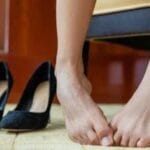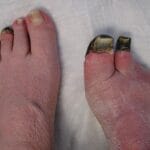Introduction
Kyphosis, commonly known as “roundback,” is a spinal condition characterized by an excessive outward curvature of the spine, leading to an abnormal rounding of the upper back. This condition can affect individuals of all ages, but it is particularly prevalent during adolescence. Severe cases may lead to a pronounced hump on the back, impacting posture and potentially causing pain and other complications.
Types of Kyphosis
- Postural Kyphosis:
- The most common type, often observed during adolescence.
- It results from poor posture and is generally flexible, meaning it can be corrected by standing up straight.
- More frequent in girls and rarely causes pain or long-term issues.
- Scheuermann’s Kyphosis:
- Named after the Danish radiologist who first described it.
- Caused by structural abnormalities in the vertebrae, leading to a more rigid and severe curvature.
- Often appears during the teenage years and is more common in boys.
- This type can cause pain, particularly at the curve’s apex, and can worsen with activity.
- Congenital Kyphosis:
- Present at birth due to improper spinal development in the womb.
- Bones may not form correctly or several vertebrae may be fused.
- Often requires early surgical intervention to prevent curve progression and associated complications.
Symptoms
The symptoms of kyphosis can vary depending on the severity and type of the curve. Common symptoms include:
- Rounded shoulders
- Visible hump on the back
- Mild to severe back pain
- Fatigue
- Spine stiffness
- Tight hamstrings
In severe cases, additional symptoms may include:
- Weakness, numbness, or tingling in the legs
- Loss of sensation
- Changes in bowel or bladder habits
- Breathing difficulties
Diagnosis
Diagnosis typically involves a combination of physical examinations and imaging tests:
- Physical Examination: Includes the Adam’s forward bend test to assess the spine’s curvature.
- X-rays: Used to visualize the degree and structure of the curve.
- MRI: Helps evaluate soft tissues and any potential spinal cord compression.
- Pulmonary Function Tests: Conducted if the curvature is severe and may be impacting breathing.
Treatment Options
Nonsurgical Treatments:
- Recommended for mild cases and postural kyphosis.
- Includes physical therapy, exercises to strengthen back muscles, and braces to support proper posture.
- Monitoring and regular follow-ups are crucial to ensure the curve does not worsen.
Surgical Treatments:
- Considered for severe cases or when nonsurgical methods are ineffective.
- Spinal Fusion: The most common surgical procedure where the vertebrae are fused to form a single, solid bone, correcting the curve.
- Instrumentation: Metal rods, screws, and plates may be used to stabilize the spine during healing.
- Osteotomy: Involves cutting and realigning the bones to correct severe deformities.
Risks and Complications
Like any surgery, kyphosis treatments carry potential risks, including infection, nerve damage, blood loss, and complications from anesthesia. Specific risks for spinal fusion include nonunion of the fusion, hardware issues, and adjacent segment disease.
Recovery
Post-surgery, most patients can expect to stay in the hospital for a few days, depending on the surgery’s extent and their overall health. Recovery involves:
- Wearing a brace to support the spine during healing.
- Gradual increase in physical activities, with a focus on avoiding strenuous activities initially.
- Physical therapy to aid in regaining strength and mobility.
Long-Term Outlook
With proper treatment, most patients experience significant relief from symptoms and can return to normal activities. Early intervention and consistent follow-up care are key to managing kyphosis effectively and preventing long-term complications.





